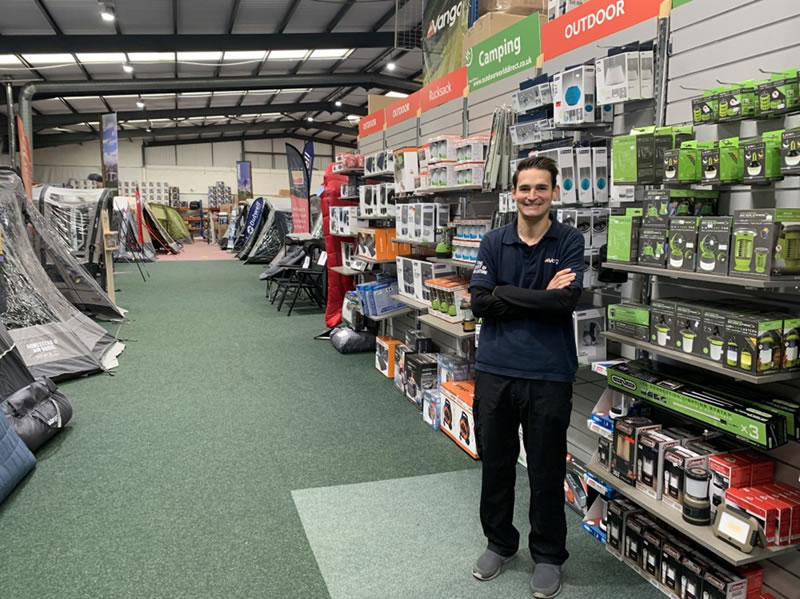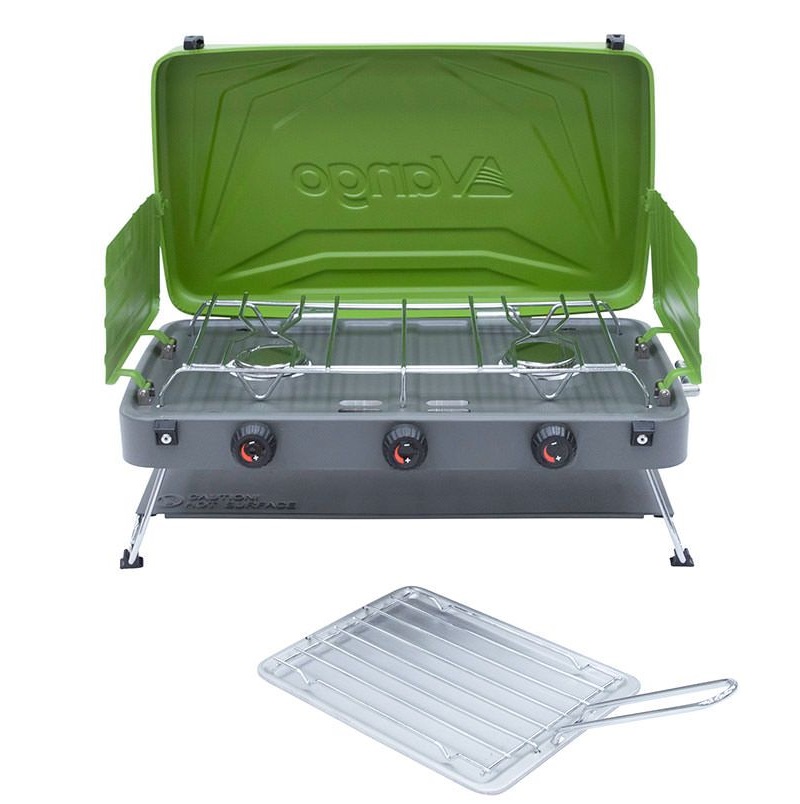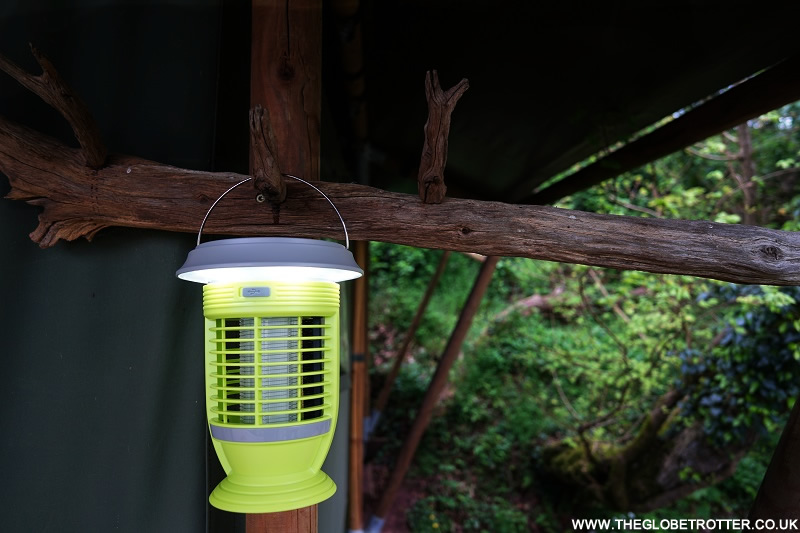How to find the perfect camping gear for your trip
Summer is usually the most popular time for people to plan a camping holiday. The warm weather, the longer daylight hours, clear blue skies, cooking over an open fire, and stargazing - the whole experience can be truly magical. It allows you to escape the hustle and bustle of daily life and immerse yourself in the natural world.
Ad
If you are new to the world of camping and need some expert guidance on finding the perfect camping gear for your trip, then read on.
David Scotland has run camping equipment shop Outdoor World Direct with his father since 1999. Now at the helm of the business, he is a fountain of knowledge when it comes to selecting the right equipment for your adventures. Below he explains what to consider when buying tents, sleep systems and more for the most comfortable and enjoyable camping trip.
Picking the right tent for your needs
When choosing a tent, it's important to consider the environment you'll be camping in, the number of people who will be using the tent, and your personal preferences for features like ventilation and storage pockets. It's also important to choose a tent that offers a good balance of durability, portability and comfort.
Here are some things I recommend you keep an eye out for:
Tent fabric: The material used for the tent's exterior should be durable, waterproof, and breathable.
Nylon and polyester are commonly used for tent fabrics, with nylon being more lightweight and polyester being more abrasion-resistant. You may also want to consider polycotton if you’re planning to camp in a hot, humid environment as it is much better at controlling condensation in those conditions, however polycotton tents have a higher price tag.
Always choose a tent that is at least 3000mm waterproof; the higher the rating the more protection you’ll get from the rain, but the price point typically increases too.
Size and weight: I always recommend selecting a tent that’s one-berth higher than your requirements as this offers more space. Consider how you’ll be transporting your tent to your location. If you are taking it in a vehicle and parking next to your pitch, weight is less of a consideration. However, if you’re planning to use public transport or have a considerable walk to your pitch, check the weight. Also, if you’re looking for one to use for trekking, weight and pack size is incredibly important - look for an adventure tent.
Layout: The most common layout for family tents is a tunnel design which goes porch > enclosed living space > bedroom. The porch is usually able to be fully sealed on larger tents, or smaller models it has a canopy which you can use as a cooking space. The internal living space is great for socialising and the bedroom often has toggled dividers so you can turn it into two or three smaller bedrooms.
With smaller tents, you may just have a bedroom or bedroom and small living space for belongings or sitting in to shelter from the rain. Again, look out for features like a small canopy or integrated front carpet to store muddy wellies/shoes.
Tent poles: Aluminium and fibreglass are common materials used for tent poles, with aluminium being more durable and fibreglass being more affordable. However, you can now get air or hybrid tents, whose poles are inflated using a pump. This makes pitching a tent considerably quicker and much easier, particularly for larger tents. The ‘poles’ or beams in air tents are very robust so you don’t need to worry about them popping.
Tent floor: In addition to the floor of your tent, which should be waterproof anyway, you might want to consider purchasing an additional footprint, which goes under the tent and protects the tent floor from the elements. This is really useful for muddy conditions or rocky, sharp ground as it protects the underside of the tent and increases the longevity of the tent. Some of our tents come with a carpet and footprint bundle included, while others must be purchased separately.
Additional material features: A flysheet is a must to keep insects out and mesh panels can help with ventilation - worth considering if you’re planning to camp in a warm, humid climate (which Britain can definitely be in the summer!). Also, look out for tents with darkened bedrooms, which reduces the likelihood of being rudely awakened early by morning sunshine.
How to choose the right sleep equipment
Choosing the right sleep system and sleeping bag for camping helps to ensure a good night's sleep outdoors. Here are some key things to consider:
Type of camping: The type of camping trip you’re planning for will influence the sleep system items you can take. If you are car camping you have a lot more choice as weight and size are less of a consideration (within reason of your tent size, of course.) However, for adventure trips you'll want to look for lightweight solutions. The season and weather will also affect what you need.
Sleeping bag temperature rating: Look for a sleeping bag with a temperature rating appropriate for the conditions you'll be camping in. Sleeping bags are typically rated for their comfort level, which suggests the temperature at which a cold sleeper might feel comfortable, such as 3c or -18c. Be sure to consider the lowest temperature you may encounter on your trip. If you are planning multiple camping trips this year, you may need a couple of different sleeping bags. Being too hot can be as uncomfortable as being too cold.
Sleeping bag shape: Sleeping bags come in a variety of shapes, including mummy and rectangular. Mummy bags are more thermally efficient, but some find them restrictive, while rectangular ones offer more room to move your feet and roll over easier, but may not be as warm.
Sleep system considerations: The most basic form of sleep system is a roll-up camping mat. While they are lightweight and easily transportable when attached to a rucksack, they only provide basic insulation and protection. If you’re one of those lucky people who can catch 40 winks anywhere this may be enough, however most of us mortals will value some extra comfort.
Self inflating mats have revolutionised sleeping in the great outdoors. Combining the lightweightness and portability of basic mats, self inflating ones also fill with air, usually at the flick of a valve, to provide extra insulation from the ground, without the need for a pump. Such is the market you can now choose different widths and thickness (known as R value) depending on the type of terrain and weather. Thicker models offer more protection from the ground but are bulkier. Like sleeping bags, many models come with a stuff sack.
Air mattresses/beds usually offer more depth than a self inflating mat, therefore giving greater protection from the ground. However, they’re usually bulkier and require use of a pump which adds to your carry load. They can often deflate slightly in warm conditions, so you’ll likely need to top them up before sleeping, although some intelligent models have automatic sensors for this now.
Camp beds offer home from home comfort by mimicking a real bed. The structure usually folds out the legs meaning you’re not touching the ground at all. But they are heavy, bulky and still require an air mattress/bed on top for optimum comfort. They’re ideal for longer stays and caravan pitches.
Other gear to consider
If you’re planning to cook your own meals, you’ll need a range of equipment such as a camping stove. If you have an electric hookup you can enjoy using electric hot plates. Alternatively you can power them with gas. Look out for Vango’s Combi IR grills as they are more efficient and save gas output.
Our thoughts on the Vango Combi IR Grill Compact
If you love cooking up your own meals while out camping then the Vango Combi IR Grill Compact would be perfect for you. It comes with two hobs for cooking and a grill for toasting and the whole unit is encased in a shell and a lid, folding away when not in use for easier portability and storage.
Both the (1.4KW) burners have their own control valves which come with simmer-high settings. A stainless steel drip tray has been provided that collects any excess food grease or oil to avoid mess, and is also easy to remove for cleaning purposes.
Anti-slip feet on the unit ensure tat the grill in held in place on table top surfaces to prevent any accidents. We also liked the windshield with the lid locks that help reduce cooking times by shielding from the unti from draughts and wind.
Overall, well built and a compact cooker that would be ideal for campers.
Next, you’ll need some lighting in your tent - most tents have hooks so you can hang a torch or lantern. If you suffer from insect bites, bear in mind that light will attract them. Thankfully, Outdoor Revolution designed a lantern called Lumi Solar Mosi Killer that deters and kills biting insects so you can enjoy night time light without getting bitten. Some models are even solar charging, with the option to use USB instead if the sun isn’t strong enough.
Our thoughts ob the Lumi Solar Mosi Killer:
We recently used the Lumi Solar Mosi Killer on a glamping trip and found it to be a useful addition to our camping esesntials kit. Not only does it have a 3 level lighting mode (full/50%/20% light) but it also keeps away the midges and mosquitoes. It has an in-built, self cleaning function which we thought was a great idea.
The Lumi Solar Mosi Killer has 2 charging options - solar and USB charging with USB cable and is rainproof to IPX4, so you don't have to worry at all while using it outdoors in any weather.
If you plan to spend time around your tent, don’t forget camping chairs. There are lots of different models now, some with more padding and wider frames for larger people. And some have cool features like insulated cup holders to keep your coffee warm and beer cold. We even sell a heated chair, which when plugged into a power bank, offers different heat settings so you won’t feel the cold while relaxing at the campsite.





Post a Comment